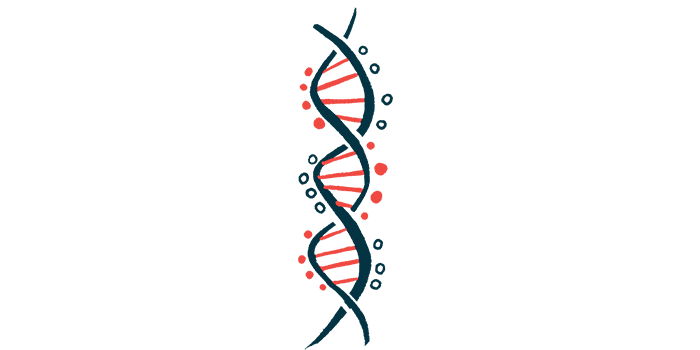Newly ID’d TNXB Mutation May Be Cause of Man’s Rare Collapsed Lung
Written by |

A collapsed lung and a new TNXB gene mutation were identified for the first time in a patient diagnosed with classical-like Ehlers-Danlos syndrome (clEDS), according to a recent case report.
The report, “Recurrent pneumothorax in case of tenascin-X deficient Ehlers-Danlos syndrome: Broadening the phenotypic spectrum,” was published in the American Journal of Medical Genetics – Part A.
clEDS is caused by mutations in the TNXB gene, which results in a deficiency of the tenascin-X protein. Tenascin-X supports the function of collagen, an important protein involved in giving connective tissues their structure and shape.
This rare form of Ehlers-Danlos syndrome (EDS) is autosomal recessive, meaning that it occurs when a person inherits two TNXB mutations, one from each parent.
The mutations result in the characteristic symptoms of clEDS, including soft skin, bruising, and joint hypermobility, among others. clEDS shares several clinical features with other forms of EDS, and genetic analyses to find TNXB mutations are complex, making a diagnosis difficult.
Researchers described the case of a 34-year-old man in Australia who was diagnosed with clEDS after clinical assessment and genetic testing.
The patient was first referred for genetic testing when he was 10 due to symptoms that included repeated shoulder dislocations, stretchy skin, and easy bruising. He was suspected of having vascular EDS (vEDS), but genetic testing did not show any mutations in the genes associated with that type, and no diagnosis was made.
His case was reviewed again at age 34. The man showed the three major criteria for a clEDS diagnosis: velvety, stretchy skin without scarring, overly mobile joints with recurrent joint dislocations, and skin that bruised easily.
He also had one minor clEDS diagnostic feature — raised spots, or papules, on the feet. Furthermore, he reported having daily fatigue and musculoskeletal pain for years.
Doctors performed an echocardiogram to test heart function and observed some mild abnormalities. These features are not diagnostic criteria for clEDS, but have been reported in patients.
When he was 20, the man began having recurrent spontaneous pneumothorax, or a collapsed lung, which occurs when air escapes and puts pressure outside the lung, preventing it from expanding during breathing. A third collapsed lung at age 29 led to surgical procedures when he was 30 to prevent it from recurring.
“Given the presence of three major and one minor criterion for clEDS, further genetic testing was offered,” the researchers wrote.
The genetic test revealed a TNXB mutation (c.12234_12237del) that had not been reported before. The mutation, inherited from his father, causes the tenascin-X protein to be shortened and nonfunctional.
From his mother, he inherited two known TNXB mutations reported previously in clEDS patients.
Together, the clinical features and genetic testing confirmed a clEDS diagnosis.
Although collapsed lungs had never been described in a clEDS patient before, it’s reasonable to assume that TNXB mutations could lead to this symptom, the researchers said.
Since TNXB is important for maintaining tissue structure, it can help keep lung tissue strong. A deficiency could cause the tissue to weaken and be unable to stand up to excess air pressure.
Collapsed lungs are a known feature of vEDS and Marfan syndrome, two other connective tissue diseases.
“We postulate that spontaneous pneumothorax is directly related to TNXB-protein deficiency and shares similar [features] with other related connective tissue disorders,” the researchers wrote. “This case expands the [symptom] spectrum of clEDS and highlights the challenges with molecular analysis and diagnosis.”
Given these challenges, “it is likely that clEDS is underreported and under-diagnosed,” the researchers wrote.



